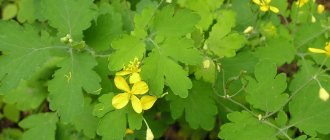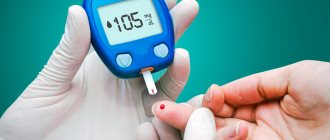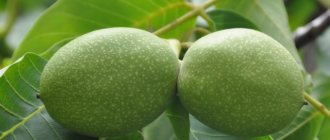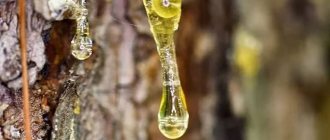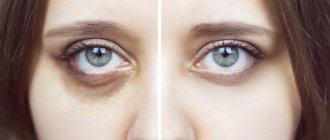Redness and acne on the nose, chin and cheeks are characteristic signs of rosacea, a chronic skin pathology. Rosacea is otherwise called “rosacea.” In its advanced form, the disease can spread to the neck and décolleté. Such skin damage does not cause irreparable harm to health, but it does cause a lot of discomfort and spoils the appearance. A proven method of treating rosacea is folk remedies, which will be an effective addition to medications prescribed by a doctor.
Causes and symptoms of rosacea
The disease is accompanied by an increase in blood flow to certain areas of the body, which causes redness. The main causes of rosacea include:
- endocrine system disorders;
- regular mental and physical overload;
- consumption of alcoholic beverages, as well as fatty and spicy foods;
- ultraviolet irradiation;
- digestive problems;
- severe overheating or hypothermia of the body.
Symptoms of rosacea are thickening, inflammation and redness of the skin, spider veins, pustules, tightness, burning and itching.
Causes of rosacea
Before moving on to methods of treating rosacea, let's determine the causes of its occurrence. Firstly, the development of this pathology becomes possible when the upper layer of skin is highly sensitive to external influences. Another factor that was previously thought to be associated with the development of rosacea is a very small mite that lives in the upper layers of the skin - dermodex. It has now been proven that this mite is also found in healthy people.
According to doctors, one of the causes of this dermatological disease is gastritis and duodenal ulcers, or more precisely, the bacterium that causes them. Dermatologists identify a form of medicinal rosacea that occurs as a result of treatment with hormonal drugs. Also factors that increase the risk of rosacea are UF radiation, stressful situations and hot climates with high humidity.
Visual indicators of pathology are redness of the skin and its thickening, then the appearance of tubercles in these places, which eventually become pimples.
Although the symptoms look ominous, it is worth remembering that rosacea is not an infectious pathology and is not transmitted from person to person.
Cautions before home treatment
A dermatologist will help you choose the appropriate treatment for rosacea with folk remedies. It is not recommended to use the first folk recipes you come across on your own; you should use remedies agreed upon with specialists. The main principle of traditional therapy is the use of natural ingredients without the addition of dyes, flavors and preservatives.
It is important to provide the skin with maximum protection from several factors:
- sunlight (before going outside, apply products with an SPF filter to your face);
- hard, very cold or hot water;
- mechanical injuries;
- cold strong wind.
Women with rosacea will have to give up decorative cosmetics, including expensive ones. The usual care products are not suitable either.
Among the time-tested folk recipes there are many compresses, masks, rubs that alleviate the condition and improve the appearance of the skin.
Symptoms of Rosacea
The disease mainly manifests itself in the formation of red spots on the skin of the face. As a rule, they spread to the forehead, bridge of the nose, cheeks and chin. Redness that occurs after exposure to unfavorable factors does not go away over time, but at first it does not cause much physical discomfort. Patients are only concerned about the external manifestations of the disease from an aesthetic point of view, which at the initial stage can be masked with the help of appropriate cosmetics. However, the disease progresses, and its symptoms become more and more pronounced. Nadezhda Zhurbina says that experts distinguish 4 phases of rosacea:
- Prerosacea. The initial stage is characterized by the so-called erythema of shyness, which manifests itself as a lightning-fast appearance of redness of the skin against the background of increased emotionality, which may be accompanied by not very pronounced, but unpleasant tingling sensations. The mechanism is triggered under the influence of direct sunlight, nervous shock, extreme heat or, conversely, cold, alcoholic beverages, food rich in spices, excessive physical exertion, cosmetics, adverse weather conditions, as well as after taking hot baths and drinks.
- Vascular phase. Red spots and swelling with multiple and persistent dilation of arterioles, venules and capillaries begin to appear on the face. There is a risk of ophthalmic rosacea when the pathology spreads to the eye area. In this case, the patient notices redness of the whites and swelling of the eyelids, he is bothered by itching, burning and a feeling of a foreign body. Possible development against the background of vasomotor disorders.
- Inflammatory stage. At this stage, the appearance of sterile papules and pustules is observed. The phenomenon is also called “adult acne.”
- Late stage. This form is characterized by rhinophyma - a benign tumor change in the tissues of the nose and cheeks, which is caused by existing inflammation, impaired collagen synthesis and excessive activity of the sebaceous glands.
Our expert explains that, despite the fact that, as a rule, the stages of the disease follow one after another, in some cases there is a sharp jump with a transition directly to the inflammatory phase, bypassing all the others.
If the disease is not treated, it will progress and “grow” with additional manifestations in the form of a feeling of dryness and tightness, the skin will become rough to the touch and swollen, spider veins will be impossible to hide with the help of foundation.
Compresses
During the period of exacerbation of rosacea, treatment at home is not complete without the use of cold lotions. They relieve swelling, reduce the activity of the inflammatory process, and constrict blood vessels. Decoctions prepared from medicinal herbs effectively eliminate symptoms:
- Chamomile. Softens the skin and has an anti-inflammatory effect.
- Sage. Kills pathogens, suppresses inflammatory processes.
- St. John's wort. Constricts blood vessels, relieves swelling and pain.
Dried plants are used for decoctions. The material is poured with boiling water and kept on low heat for no more than 15 minutes. The finished composition is cooled, filtered and placed in the refrigerator. Cotton pads or pieces of gauze are soaked in the broth and applied to the affected areas. You need to keep the compress until it dries or warms up. Repeat after waking up and before going to bed.
For folk lotions against rosacea, infusions of herbs are also used, which are only poured with hot water, but not boiled. As a result, most useful components are preserved. Yarrow, parsley, and string are suitable for preparing infusions. Lotions with infusions are applied to the rashes pointwise.
A positive result is achieved by applying fresh aloe or cranberry juice. The procedure is repeated every other day. The course consists of 25 compresses.
Lotions with rosehip tincture moisturize well, saturate with vitamins, dilate blood vessels, preventing their ruptures.
What is rosacea
The exact cause of this disease has not been fully established.
Chronic, recurrent dermatosis of the epidermis, which is characterized by stages of polyetiological nature with possible angioneurosis of the venous system, is commonly called rosacea.
To put it simply, this disease manifests itself in the form of persistent, itchy redness on the skin with compactions in the form of nodules that unite into single formations. They can become covered with scales, sebum, and ulcers.
The exact cause of this disease has not been fully established. Doctors identify several possible factors that can provoke the development of this pathology.
Masks
These folk remedies for treating rosacea eliminate redness, itching, swelling, and help restore the skin.
Important! If purulent blisters appear, do not rub the skin - this will increase the area of the rash.
Traditional mask recipes use ingredients that do not harm the body.
Cucumber
The fresh vegetable is grated on a fine grater and distributed evenly over the face. After half an hour, remove it with a napkin and rinse the skin with water.
Apple
The grated fruit is applied to the skin for 15 minutes, then washed off with water at room temperature. The manipulations are repeated every day until the condition improves.
Spices
4 tsp. coriander (in powder form) and 2 tsp. turmeric mixed with 2 tsp. milk. The mixture is distributed over the face and washed off after 10 minutes. You should do this mask twice a day.
Hercules
2 tbsp. l. crushed cereal is combined with a small amount of clean water and applied to the affected skin for 20 minutes. Oatmeal quickly relieves irritation and relieves itching.
Kefir
The product is applied to the inflamed areas in 2 layers. The mask is made daily. It is better to make kefir from homemade milk rather than using store-bought milk.
Honey
Fights germs and inflammation, removes toxic substances, moisturizes the skin. 2 tbsp. spoons of honey mixed with 1 tbsp. a spoonful of olive oil and 1.5 tsp. milk. The mask is applied for 10 minutes, then washed off with warm water. Use no more than 3 times a week.
Treatment methods for rosacea as an underlying disease
Phototherapy
- Photodynamic therapy (PDT)
is one of the new therapeutic technologies for the treatment of various forms of acne, including rosacea [9]. - Photopneumotherapy
is a type of PDT and also has a good therapeutic effect in the vascular stage of rosacea: after the first session, the severity of hyperemia and vascular pattern decreases [10]. However, in 23% of cases, so-called photosensitive forms of rosacea occur, when the manifestation of rosacea is observed at the first rays of the spring sun; such patients are not recommended to use phototherapeutic techniques.
Cosmetology procedures
Masks, some injection methods, etc. are aimed at improving the condition of the superficial vessels of the skin, microcurrent therapy is aimed at providing lymphatic drainage.
Diathermocoagulation
Unlike acne, where the opening of inflamed and non-inflamed sebaceous cysts leads to a rapid therapeutic effect and clinical remission, with rosacea, as a rule, there are no cystic cavitary elements, the papule is dense. We use diathermocoagulation for rosacea only in relation to individual telangiectasias after the removal of acute inflammatory phenomena and reduction of swelling and diffuse hyperemia of the facial skin.
Changes in the sebaceous glands, their enlargement with the formation of sebaceous cysts are characteristic of acne (acne vulgaris). The vascular and initial stages of papular rosacea occur without involvement of the sebaceous gland. In a later period, with long-term, protracted complicated forms of rosacea, the sebaceous gland becomes activated with the formation of cysts. Apparently, due to chronic inflammation, local stimulation of androgen receptors in the skin occurs. In these cases, diathermocoagulation of cystic elements is quite effective.
Local preparations
Gel Skinoren 15%
. For topical treatment of rosacea, there is a smaller range of topical medications available than for the treatment of acne. The direction of action of drugs for rosacea: vasoconstrictor, anti-inflammatory, antibacterial, anti-demodex. In recent years, Skinoren gel with 15% azelaic acid has been successfully used for rosacea. The effectiveness of Skinoren for rosacea reaches 90%. Some doctors and patients are concerned about a slight burning sensation, irritation or minor aggravation of the skin when starting treatment with Skinoren, and they discontinue this drug. Indeed, these side effects may occur if the drug is prescribed too early. In these cases, we usually interrupt the use of Skinoren for 2-3 weeks and continue treating rosacea with classical methods. Then Skinoren gel 15% is re-prescribed for 2-3 months until clinical remission occurs. The previously described adverse reactions do not recur.
Sulfur-containing gel Delex-acne
. The sulfur-containing gel Delex-acne has been shown to have good therapeutic effectiveness for acne and rosacea. The active principle of the gel - activated sulfur in combination with anti-inflammatory plant extracts (nettle, calendula) - prevents the increase in greasiness, has antibacterial, anti-inflammatory and anti-demodectic effects [11].
Roaccutane
Recently, there has been a tendency to expand the indications for the systemic use of isotretinoin (Roaccutane) in the treatment of rosacea. This drug is an effective treatment for severe forms of rosacea. Despite drier and more sensitive skin, patients with rosacea tolerate Roaccutane well. Side effects in the form of dryness and irritation when using it are no more pronounced than in patients with acne. True, you cannot do without specific skin care while taking Roaccutane, which reduces external side effects to zero.
It is important to note that the appointment of Roaccutane should be planned already at the first visit of a patient with acne or rosacea, if there are appropriate indications, for example, for patients with long-term severe widespread forms of rash (cystic and atheromatous), who, as a rule, have already been treated with antibiotics, but with a temporary effect. We believe that physician concerns about drug toxicity do not justify delaying its use in these patients. Comparing the effect of roaccutane and antibiotics on the body, we can say that the severity of the side effects of antibiotics is no less, if not more, than that of roaccutane. Retinoids have been described to act on the etiological factor of rosacea, vascular endothelial growth factor (VEGF), by reducing its activity [12]. Considering the suppressive effect of retinoids on VEGF, it is advisable to conduct broader studies of the therapeutic effect of roaccutane on the vascular stage of rosacea.
Mesotherapy
Mesotherapy must be carried out taking into account the visceral cutaneous zones of reflex projection, since in the acute and subacute state of this disease, injections into the facial skin are too aggressive.
Basic naturopathic therapy
The use of naturopathic therapy in combination with classical methods or alone (for mild disorders) can be very beneficial for any dermatological patient, including those with rosacea. The main stages of basic naturopathic therapy are detoxification, stabilization, and recovery. Additionally, specially individually selected treatment methods are prescribed, for example, correction of the psycho-emotional state with homeopathic medications, reflexology, hirudotherapy, etc. [8].
Hirudotherapy
In our practice, the use of this method has proven to be very effective not only in the acute and subacute stages of rosacea, but also during the rehabilitation period. Hirudotherapy sessions were carried out once a week, a course of 5–10 procedures. The number of leeches used per session was small (4–7 pieces). The procedures were well tolerated in all patients. The reduction in redness on the face was noticeable from the first procedure. Well-being and sleep improved, and patients became calmer. The maximum clinical effect on the face was achieved after 6–7 procedures. The effect of hirudotherapy is complex and consists of several factors: reflex, mechanical and biological [13].
This method allows you to eliminate venous congestion and increase blood supply. In addition, substances that have analgesic and anti-inflammatory effects enter the bloodstream. For example, the enzyme hirudin, secreted by a leech, helps reduce blood viscosity. As a result, blood microcirculation improves and facial swelling decreases. Another leech enzyme, hyaluronidase, depolymerizes hyaluronic acid molecules, “dissolving” the intercellular cement. Third, collagenase actively breaks down pathological collagen, which at the clinical level is manifested in regression of hypertrophic scars and softening of fibrotic connective tissue.
Homeopathy
Endocrinologists often do not find significant endocrine pathology in patients with rosacea that requires hormone replacement therapy. Classical homeopathy as a regulatory therapy is especially effective for endocrine pathologies. Homeopathic medicines for the treatment of the gastrointestinal tract help gastroenterologists obtain an earlier and more lasting effect from treatment. And, of course, the role of homeopathic remedies in regulating the psycho-emotional status, which is so important for rosacea, is invaluable.
Modern homeopathy and antihomotoxic drugs are an effective direction in medicine. Homeopathic complexes allow doctors of all specialties to use them in their practice. Detoxification therapy with these drugs allows you to achieve faster positive dynamics in treatment. These are the drugs Traumel comp., Coensim comp., Ubichinon comp., Limphomiosot comp., Cutis comp. and etc.
Oxygen-ozone therapy
Low concentrations of ozone are used in medicine. It has an antibacterial effect, is a catalyst, stimulates redox processes, improves the synthesis of biologically active substances. Ozone stimulates the immune system, especially the phagocytic protective function, increasing it 4 times. Restores metabolic processes in affected tissues, reduces or eliminates inflammation. To treat rosacea, subcutaneous administration of an oxygen-ozone mixture is used starting 2–3 weeks of treatment after the acute inflammatory phenomena have subsided. The course of treatment averages from 3–4 to 10 procedures 1–2 times a week. As a result of ozone therapy, swelling of facial tissues, congestive hyperemia, which is characteristic of rosacea, and partially small telangiectasias disappear (larger ones are later removed by diathermocoagulation). In the papular stage of rosacea, papules resolve faster. After a course of oxygen-ozone therapy, the likelihood of relapses decreases. During the period of remission, to restore the color, quality of the skin, and eliminate stagnant spots, maintenance oxygen-ozone therapy is carried out: 2-3 times a month, followed by lymphatic drainage massage.
Cryomassage
During cryomassage, as a result of the surface action of liquid nitrogen, a narrowing (vasoconstriction) of blood vessels occurs, followed by expansion (vasodilation) of not only active but also reserve capillaries, which significantly increases blood flow to the skin tissues and improves their trophism. Lymphatic drainage and immunomodulatory effects are noted, cellular metabolism and regenerative processes are activated [14]. Cryotherapy for rosacea is indicated regardless of the stage of the disease. The intensity of cryomassage depends on the form of rosacea and skin type.
Wiping and washing
Folk remedies relieve rosacea and improve the condition of the epidermis. There are many recipes.
Chamomile infusion ice
To prepare, you will need 2 tablespoons of dried plant material, which are filled with water and kept on low heat for no more than 15 minutes. The broth is cooled, poured into special molds and frozen.
Ice is used to wash your face every day. You cannot use a towel after it; the skin should dry naturally.
Propolis solution
A 5% aqueous solution is suitable for treatment according to this folk recipe. Before going to bed, you should wipe your face with the product, and the next morning remove the resulting film with a cotton pad soaked in boiled water. Propolis has proven itself positively in the treatment of rosacea, as it effectively eliminates irritation and itching.
Aloe
To wipe, just take a fresh aloe vera leaf and wipe your face with it at least once a day. It is especially effective to do this before applying moisturizing creams.
Cranberry
Berry juice with the addition of a small amount of water is used to care for inflamed skin in the evening.
Diagnosis of rosacea
An experienced doctor can easily identify rosacea just by looking at the patient, especially when there are characteristic manifestations of nasal pineal or if the disease is advanced. Modern dermatology can clarify the patient’s diagnosis based on the data that the doctor receives, with the necessary studies of the intestines, blood vessels, laboratory blood tests and microparticles taken from reddened skin.
An ophthalmologist, endocrinologist and other doctors may be involved in treatment, so it is recommended to seek help from a doctor in order to begin treatment in the early stages, without waiting for the disease to develop and the body’s condition to worsen. The doctor will be able to help you choose the appropriate treatment and get rid of rosacea, depending on what form of the disease the patient has.
Decoctions you can drink
It is not enough to treat rosacea only with external means, so there are folk recipes for preparing decoctions for oral administration.
A properly selected diet and the use of vitamins are complemented by traditional methods.
Mint and calendula
1 tsp. calendula and mint are poured into 1 liter of water. The mixture is boiled over low heat for 10 minutes, cooled, and infused. The finished decoction is drunk within 30-60 minutes. before meals.
Rose hip
The berries are filled with water and brought to a boil, then infused for 1 hour. The decoction is useful because it contains a large amount of microelements that a person needs. They strengthen the walls of blood vessels, including those on the face.
Herbs
You will need horsetail, nettle, and burdock stems. The components are mixed, 1 tbsp. The mixture is poured into a glass of clean water and placed in a water bath for 5-8 minutes. The result is 0.5 cups of decoction. You should drink it no more than 4 times a day.
Symptoms and stages of the disease
The main signs of rosacea are persistent redness, itching, the formation of pink acne nodules, as well as pustular infiltrates.
There are 3 stages of the disease with the following characteristic signs of this process:
- The erythematous-telangiectatic stage is expressed by moderate redness, periodically localized in the center of the face. As the disease progresses, the redness becomes persistent and more extensive (can cover the entire face and neck), and the nodules become denser. In this case, a person experiences a feeling of itching, burning, tingling in the affected areas of the skin, which over time acquire a bluish tint.
- The papulopustular stage is characterized by the appearance of red papules in the cheeks, nose, chin, forehead and nasolabial folds, the size of which can reach 5 millimeters. Their structure is dense, with thin scales on the surface. They are localized in isolation or grouped without merging with other foci. This stage is accompanied by the appearance of infiltrates and swelling of the skin.
- The pustular-nodular stage is manifested in the appearance of persistent individual redness with many new foci on the surface of the skin, as well as plaques, edematous nodules and papules, merging into single, extensive conglomerates. Hyperplasia of the sebaceous glands, the appearance of connective tissue compactions, and cicatricial deformities lead to an increase in areas of skin damage. Against this background, disturbances occur in the blood and lymph flow, and puffiness of the face appears. The growth of tumor-like formations disfigures the face, and a severe form of the disease begins to develop - rhinophyma.
About half of patients experience eye damage, accompanied by redness, dryness, lacrimation, pain and a sensation of the presence of a foreign body.
